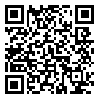Volume 18, Issue 4 (10-2014)
IBJ 2014, 18(4): 219-224 |
Back to browse issues page
Download citation:
BibTeX | RIS | EndNote | Medlars | ProCite | Reference Manager | RefWorks
Send citation to:



BibTeX | RIS | EndNote | Medlars | ProCite | Reference Manager | RefWorks
Send citation to:
Kazemnia A, Ahmadi M, Dilmaghani M. Antibiotic Resistance Pattern of Different Escherichia coli Phylogenetic Groups Isolated from Human Urinary Tract Infection and Avian Colibacillosis. IBJ 2014; 18 (4) :219-224
URL: http://ibj.pasteur.ac.ir/article-1-1166-en.html
URL: http://ibj.pasteur.ac.ir/article-1-1166-en.html
Abstract:
Background: The emergence and propagation of different phylogenetic groups of antimicrobial-resistant E. coli have become a worldwide health concern in human and veterinary medicine. Therefore, the evaluation of the phylogenetic distribution of antibiotic-resistant E. coli is important for therapeutic and economic purposes. The aims of this study were to determine phylogenetic groups and patterns of antibiotic resistance of E. coli strains isolated from human urinary tract infection and avian colibacillosis. Methods: A total of 50 E. coli isolates (25 from human urinary tract infection and 25 from avian colibacillosis) were characterized by culture and assigned as different phylogenetic groups (A, B1, B2, and D) by triplex PCR assay. Kirby-Bauer disk diffusion method was used to assess the susceptibility of all isolates to ten antibiotics. Results: Results showed that the majority of the human and poultry isolates belonged to phylogenetic groups A and B2 and phylogenetic group B1 of the avian pathogenic strain isolates were the most drug-resistant isolates. Most of the isolates were resistant to at least five antibiotics, and multiple drug resistance was observed in 98% of E. coli isolates. A high degree of resistance was seen against penicillin and erythromycin. Conclusion: According to the results of this study, multidrug-resistance among isolates and high relation between phylogenetic groups and resistance in both human and poultry isolates were observed.
Type of Study: Full Length/Original Article |
Subject:
Related Fields
| Rights and permissions | |
 |
This work is licensed under a Creative Commons Attribution-NonCommercial 4.0 International License. |








.png)
